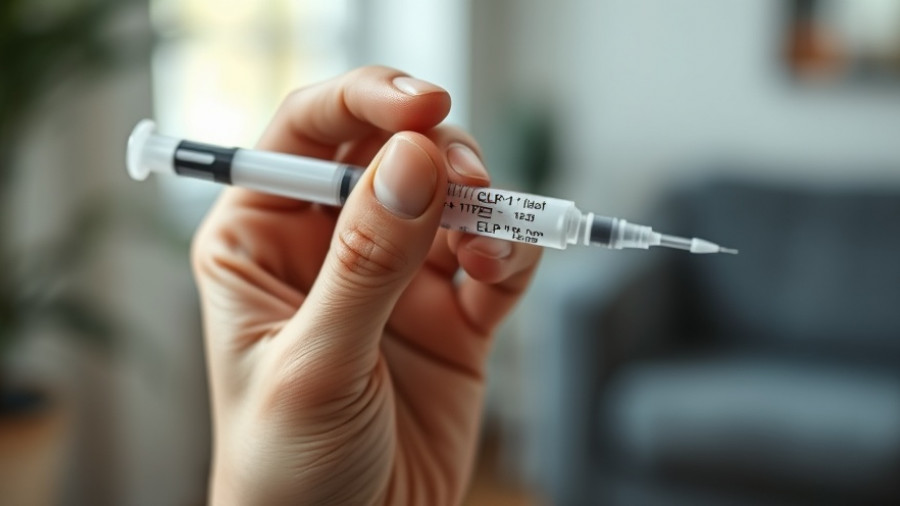
Unlocking GLP-1: More Than Just Weight Loss
Glucagon-like peptide-1 (GLP-1) has evolved from a medication primarily aimed at weight loss to a groundbreaking agent now recognized for its potential in enhancing longevity and cellular health. Initially developed for individuals with type 2 diabetes, GLP-1 agonists are finding new applications among lean individuals who seek metabolic optimization and longevity support, not necessarily weight loss. This shift indicates a significant change in how GLP-1 is perceived and utilized in the aesthetic and medical communities.
Rethinking the Role of GLP-1 in Longevity
Research shows that it is not just the reduction of body weight that benefits health; the cellular and metabolic changes induced by GLP-1 therapy can lead to improved cardiovascular, liver, and kidney functions. A study conducted by the Cleveland Clinic revealed that patients treated with semaglutide, a widely used GLP-1 medication, not only experienced weight loss but also significant reductions in cardiovascular events, underlining the broader implications of GLP-1 therapy beyond the aesthetic and weight management sectors. These findings suggest that healthcare professionals working in medical aesthetics need to consider GLP-1 as part of a multifaceted approach to patient health that encompasses longevity and not just body composition.
Muscle Preservation: A Primary Concern
As the use of GLP-1 in lean individuals gains traction, an essential focus emerges on muscle preservation. While GLP-1s effectively reduce visceral body fat—a major contributor to metabolic disease—there is a growing concern about muscle loss among users. Recent studies indicate that GLP-1 therapy can lead to unintended muscle catabolism, highlighting the necessity for personalized, data-driven monitoring for those who are lean and using these therapies. Medical spa owners must be equipped to offer comprehensive care that considers not just the weight loss effects but the overall metabolic health of their patients.
Integrating Comprehensive Care for GLP-1 Users
Dr. Arvind Chakravarthy from the Beverly Hills Rejuvenation Center emphasizes the importance of a holistic care model, incorporating lifestyle assessments such as nutritional analysis, hormone tracking, and resistance training. This model seeks to maintain muscle mass while enabling the patient to achieve their desired body composition through GLP-1 treatment. Fostering such an integrated approach could position medical spas not just as aesthetic centers, but as authorities on health optimization, ultimately attracting a broader patient base seeking long-term health benefits.
The Future of GLP-1 and Patient Health
With ongoing research illuminating the multi-faceted benefits of GLP-1 therapies, the implications for the future are profound. As spa owners adapt to these advancements in GLP-1 applications, they can play a vital role in guiding clients toward safety and efficacy. Prescribing GLP-1 to fit individuals isn't about chasing superficial aesthetics; it's about providing a platform for healthier aging and longevity.
For medical spa owners, embracing GLP-1 in this comprehensive manner may not only improve client outcomes but also significantly enhance the service offerings that set them apart in a competitive market. It fosters a deeper clientele connection, emphasizing the spa's role in the long-term wellbeing of patients.
Call to Action: Embrace Comprehensive Care Strategies
As GLP-1 therapy transforms the medical aesthetics landscape, consider adopting an integrative care strategy in your practice. Monitoring and supporting your patients in their journey toward longevity can create a niche market for your spa and build long-lasting patient relationships focused on health and optimization.
 Add Row
Add Row  Add
Add 




Write A Comment